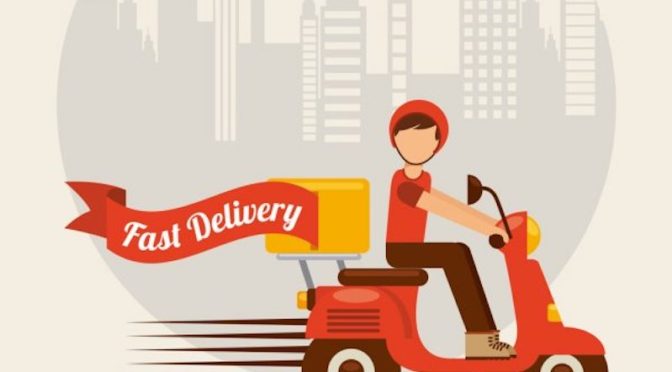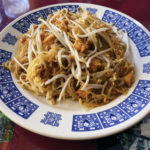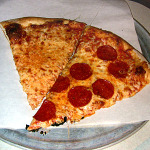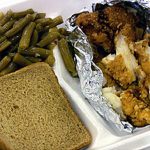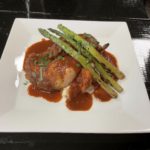Times are tough for us all as we live through the worst pandemic in living memory, and the restaurant business is being hit hard.
Some of our favorite local eateries are closed, and their servers, kitchen staff, chefs and owners have been scrambling for alternative sources of income.
Many more restaurants are staying open for carryout and delivery. They’re hanging on to at least part of their staff, to cook the meals we love and hustle them out to a line of hungry diners waiting in our cars at the curb.
But how about the good folks who get our hot dinner the last mile to our houses?
I’m talking about the workers who drive the delivery runs, working for the individual restaurant or for GrubHub, Uber Eats, DoorDash, and the other new companies that had already sprung up to make delivery easy.
Let’s get into the passenger seat – virtually, of course – and ride along with a couple of these drivers as they hustle through the evening and into the night to bring us our food, safe and sanitary and without getting closer to us than six feet.
Richard Slawsky, a former reporter in New Orleans and Louisville, has been driving for Lyft part-time, but that’s died out during the pandemic, he said, so now he’s doing restaurant delivery for Uber Eats and DoorDash.
Writing on the LouisvilleHotBytes forum recently, Slawsky offered a few random suggestions for restaurants from the delivery driver side.
- Limit your menu if that will help speed up service. People are looking for normalcy as opposed to specific menu items. If they can get it quick they’ll be much happier.
- Opt for curbside service for delivery drivers, even if you have a drive-thru. There’s nothing worse than going to pick up an order and having to wait in a 15-car line at the drive thru to pick it up. “I’m talking to you, Steak and Shake Clarksville,” Slawsky said. “I’ve seen several places with servers taking orders at cars. We don’t care if you’re wearing a mask and gloves.”
- If you’re not letting people in the restaurant, post your number on the door in case the curbside people don’t see you. “I hate having to bang on your window to attract attention.”
- If you are letting people in the restaurant, put a chime on the door. “I went into a restaurant the other day where they had tables arranged to make an improvised waiting area. There was nobody in the dining room at all, and a tip jar full of cash was sitting on one of the tables. I had to call them to let them know I was out there.”
- If the order isn’t ready when the driver arrives, offer them a soft drink or at least a cup of water.
- Finally, seal the bag before handing it over, but first double-check to make sure everything’s accounted for. And please don’t leave it up to the driver to inform the customer of a substitution. If you substituted X for Y, please inform the customer before the driver arrives.
This is all excellent advice, so listen up, restaurant owners and kitchen staff. You’re busting your butts to get your best product out your door. Make it easy for the hard-working people who will take it from there to the diner’s front porch.
Another look at the delivery side comes from LouisvilleHotBytes participant. Alanna, an IT professional and longtime Louisville resident who now lives in Colorado Springs, had been doing gig-economy work for the past couple of years to pay for vacation and traveling. In the pandemic economy she’s driving restaurant delivery along with grocery shopping and delivery.
The biggest issue she has run into in restaurant delivery is accepting a delivery offer and driving to the restaurant, only to be told when she gets there that the order won’t be ready for another 45 minutes. “In those instances, she said, “I’m not going to wait around. Time is money in gig work. If I have to wait 45 minutes for the order to be ready, then that’s 45 minutes I’m not able to receive any other orders and make money.”
The math is simple and stark, she explained. A dining delivery order typically pays her only $7 to $10, and yes, that includes a tip. The key to success is obvious: Complete as many orders as you can, as quickly as you can, to make it worth your while. If she’s told there will be a wait longer than 10 minutes, she’ll drop the order, which then goes to the next driver in line, who will likely do the same if he’s told there’s still a wait. Meanwhile, the customer at home is wondering what’s taking so long. What’s the solution? That’s above Alanna’s pay grade, and mine, but she likes the way GrubHub handles orders: Restaurants can trigger a popup in the app alerting her that an order is ready … and they could do that a few minutes ahead to give her time to get there.
Another no-no: Even in the pandemic, some restaurants still require the driver to arrive, place the order, pay with a card, and wait. That’s not going to happen for her, she says. Her time is worth more to her than that.
Agreeing with Slawsky’s take, Alanna really appreciates a beverage – even water – If there is a wait for the food of even just five minutes. “I admit to taking a lot of Red Robin orders because they give drivers a free cup of fries,” she added with a laugh.
How can restaurants make life easier for the drivers? Alanna loves restaurants, including Noodles & Co, Qdoba, and several other larger chains, that place their to-go orders on a shelf in the lobby with the customer’s name visibly displayed on the receipt, so the driver can walk in, grab it, and head out without any close contact.
So now the driver has the food in her car. What does delivery look like on the customer’s end?
For obvious reasons, Alanna said, most customers are choosing contact-free delivery. She drops the food at the front door and leaves. She’ll call or text the customer to let them know it’s there, or just give a few good raps to the door. “Chances are they’re watching you out the peephole anyway!”
Now, looking at you at home, waiting for your food, let’s talk about tipping. The short answer is, do it, and do it well.
“We’re expected to make our money off tips,” Alanna explains. The food companies, as she understands it, pay drivers a $3 minimum per order. Yes, I said Three Dollars per order. A high-mileage order will ad on a little, as will a large order.
So how do most people tip to help compensate for that? Sadly, not much. “Most people tip $3 to $5 on average, she said. “After paying mark-up food prices plus delivery fees, they don’t want to pay a big tip. I get it. You can’t skimp on set fees, but you can skimp on a tip.”
But she believes, and I agree, that the bare minimum should be $5, and $10 as a base minimum would be more fair. “When you don’t want to go out for food and are thinking about delivery, ask yourself how much someone would have to pay you to motivate you to go pick it up yourself,” she suggested, only half joking. That’s your base tip. Then consider the driving distance and time from the restaurant, and consider that the driver is not waiting at the restaurant but has to go there. That’s your add-on.
Be generous. You’re enjoying a good restaurant dinner at home while the driver is moving on to her next customer.
Finally, let’s make one thing clear: These drivers are working hard and counting every dollar, but they appreciate you. “Everyone has been pretty nice and patient, but that’s par for the course,” Alanna said. “Who isn’t happy when food shows up!?”
